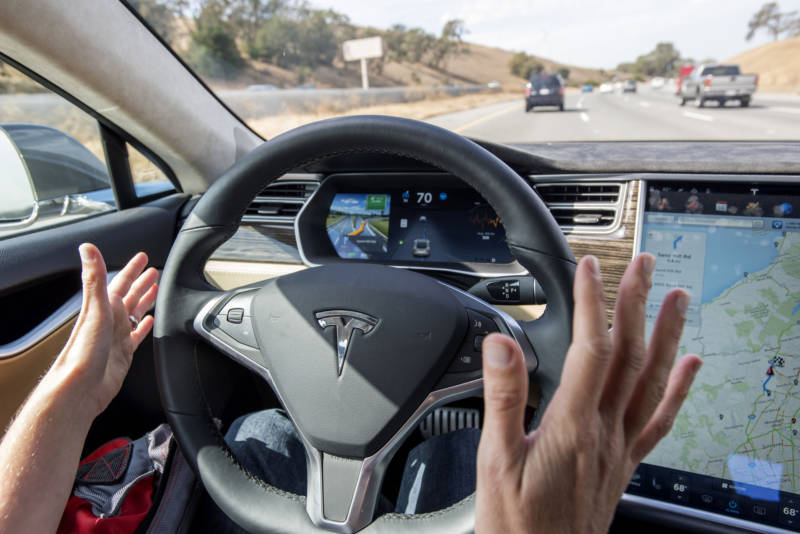This is from Tesla's blog in response to the fatal crash:
"Autopilot is getting better all the time, but it is not perfect and still requires the driver to remain alert. Nonetheless, when used in conjunction with driver oversight, the data is unequivocal that Autopilot reduces driver workload and results in a statistically significant improvement in safety when compared to purely manual driving."
Google instead is focusing on creating a fully autonomous car, all at once, and isn't selling any of them. That means it's lagging behind Tesla on driven miles, but they don't involve regular drivers. (Tesla says Autopilot has been activated for more than 130 million miles, while Google's website says its self-driving cars have driven 1.5 million miles.)
Technologically, the approaches differ, too.
Google relies on a highly expensive complex remote-sensing system called Lidar, which the website 9to5google.com explains as an "array on top of the vehicle, which — in simple terms — measures distance by pointing lasers at targets surrounding the car and analyzing the light that's reflected."
Musk late last year suggested in a press conference that Lidar was a bit excessive for an automobile:
"For full autonomy you'd obviously need 360-degree cameras, you'd need probably redundant forward cameras, you'd need redundant computing hardware, and then redundant motors and a steering rack. ... That said, I don't think you need Lidar. I think you can do this all with passive optical and then with maybe one forward radar."
Tesla's Autopilot relies on a combination of "cameras, radar, ultrasonic sensors and data automatically steer down the highway, change lanes, and adjust speed in response to traffic," and uses auto braking technology by Israeli company Mobileye.
In a statement posted by TechCrunch, a Mobileye executive said the emergency auto braking was "designed specifically" for rear-end collision avoidance, and not a lateral collision like the fatal case revealed this week.
Tesla drivers, including the man killed in the deadly crash, have posted scores of videos of near-collisions involving Autopilot use. Several have blamed the company for accidents that did occur, including 1) this one in Europe, 2) this one in California and 3) this one in Utah — in which the Tesla crashed without the driver inside while the car was self-parking.
Tesla, after reviewing vehicle logs, has attributed those accidents to human error, saying the drivers 1) were inattentive, 2) disabled the automation and 3) misused the Summon feature and didn't heed the vehicle's warnings.
Google's fully self-driving cars, which mostly ride in city environments as opposed to highways, have so far caused one crash. The Lexus model collided at low speed with a public bus in California in February.
Copyright 2016 NPR. To see more, visit http://www.npr.org/.
9(MDAxOTAwOTE4MDEyMTkxMDAzNjczZDljZA004))

9(MDAxOTAwOTE4MDEyMTkxMDAzNjczZDljZA004))